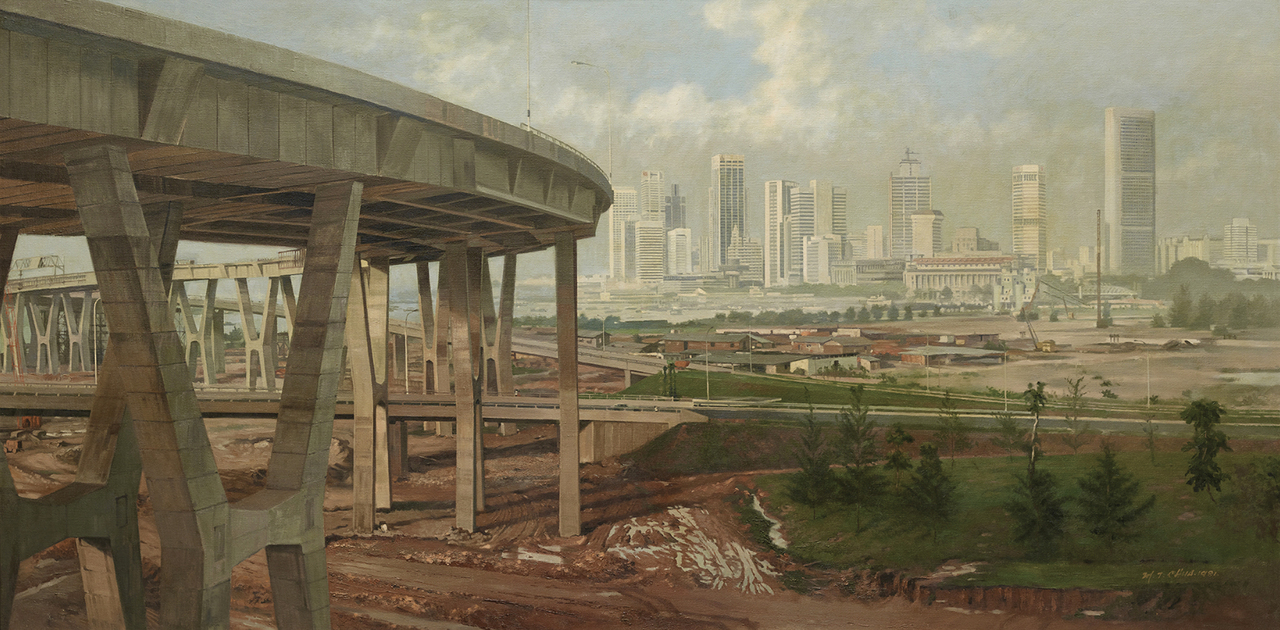SINGAPORE - Since the National Gallery Singapore opened six years ago, one of its most iconic displays has been a painting of a group of Chinese students learning Malay, drawn in 1959, the year Singapore became self-governing.
This work by pioneer generation artist Chua Mia Tee, titled National Language Class, is an emblem of the times, Senior Minister Tharman Shanmugaratnam said on Thursday (Nov 25).
Speaking at the opening of Chua's first solo exhibition in nearly 30 years, Mr Tharman said Chua's works have contributed to the building of Singapore's national identity, by helping different groups understand and empathise with one another and by connecting the young with the past, communicating to them what life was like in earlier days.
"When a new generation understands and feels that what the older generation went through is part of their identity, we become astronger nation," he said. "When we have that depth of identity, it allows us to have different perspectives, different views. Knowing that we have a common national identity allows us to have different perspectives or different views, as part of our evolving identity."
The opening of Chua Mia Tee: Directing the Real at the National Gallery was red-themed to coincide with Chua's 90th birthday, on Thursday.
Born in Shantou in Guangdong province, China, in 1931, Chua moved here with his family as a child and was most prolific from the 1950s to 1990s.
He is best known for his social realist paintings that centre the socio-political conditions of the working class. His works hold these people in high esteem, and an elderly dumpling seller and a road construction worker are given their own portraits.
Said Mr Tharman: "Chua Mia Tee's work resonates because it captured the spirit of the times. It stirs the heart and it stays in the mind. And that's why it has lasting value."
"He's obviously an artist with unusual technical virtuosity. But it's also his emotional virtuosity that comes through in his work, and is what evokes empathy, understanding of the different conditions in society, and solidarity," he added.
He praised Chua for pursuing a social realism different from the contemporaneous social realism in other countries. The style, in some forms, was so staunchly ideological that it was the officially sponsored Marxist aesthetic in communist Soviet Union and China.
"It was social realism without the overly idealised or strident or combative style that we've seen in some other traditions. His social realism was one that saw the artist not as protagonist, but as teacher and guide," said Mr Tharman.
Beyond paintings of the working class, Chua painted Singapore's early leaders, including a portrait of first president Yusof Ishak, later adapted for imprint on currency notes, which is also on show.
His landscape paintings showed how the country evolved as the Singapore River was cleaned up and modernist skyscrapers erected, while several of his sculptures, including one of his late wife Lee Boon Ngan, revealed his breadth of undertaking.

National Gallery Singapore director Eugene Tan called Chua "one of the most influential painters within the nation's art history". He was one of the founding members of the Equator Art Society in 1956, which sought to teach and develop realist art in Singapore.
"Many of his realist works have become national icons in their own right, " said Dr Tan. "In staging this solo exhibition on one of the nation's most significant artists, the gallery furthers its commitment to presenting the diversity of artistic practices and art histories here in Singapore."
The exhibition's title Directing the Real is a reference to Chua's belief that the painter acts as the scriptwriter, director and actor, freely shaping the subject's image.
The exhibition is on at the National Gallery until Nov 20 next year. Admission is free for Singaporeans and permanent residents.


